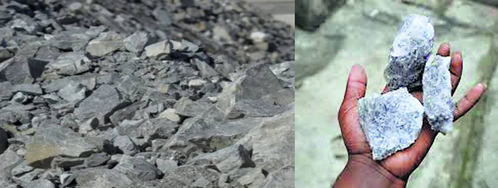New Delhi: India remains highly dependent on imports for minerals critical to accelerating its energy transition, with a full reliance on shipping in lithium, cobalt and nickel, according to a report released Monday.
The report, published by the Institute for Energy Economics and Financial Analysis (IEEFA), said that India’s demand for critical minerals is expected to more than double by 2030, while domestic mining operations may take over a decade to start producing.
It stresses that India needs a carefully crafted import strategy to mitigate potential trade risks while balancing international relationships to secure these essential minerals.
IEEFA’s report examines five critical minerals (and their compounds) – cobalt, copper, graphite, lithium and nickel – from the perspectives of import dependency, trade dynamics, domestic availability, and global price fluctuations.
The findings show that India remains largely import-dependent on these minerals and their compounds, with 100 per cent import reliance for minerals like lithium, cobalt, and nickel.
“India should strive to de-risk its critical minerals sourcing by identifying new international resources and expediting domestic production. A concerted effort to partner with and foster bilateral relations with mineral-rich nations should be a priority for India,” said the report’s co-author Charith Konda, Energy Specialist, IEEFA.
“The country can also explore investment opportunities in resource-rich, friendly nations, such as Australia and Chile, as well as African countries like Ghana and South Africa,” he added.
The report said India depends heavily on China for synthetic graphite and natural graphite and it should explore cooperation initiatives with countries like Mozambique, Madagascar, Brazil and Tanzania which are some of the highest graphite-producing countries.
“As part of the Global South cooperation initiatives, these countries could be favourable partners for India for graphite trading,” said the report’s co-author Kaira Rakheja, Energy Analyst, IEEFA.
India is also highly import-dependent for copper cathodes and nickel sulphates from just two countries – Japan and Belgium. The report suggests India could look at the US, the fifth largest producer of copper in the world, to diversify its suppliers and enhance supply security.
For minerals like lithium oxide and nickel oxide, the dependency is low on one country, but overall imports largely come from Russia and China, both countries with potential trade risks.
“Developing domestic lithium refining capacity will help India integrate with the global lithium supply chain,” said Rakheja.
The report also notes the significant efforts that the Indian government is making to improve domestic production of critical minerals with the auctions by the Ministry of Mines and the planned Critical Minerals Mission.
“The critical minerals mining block auctions can serve as an opportunity for India to focus on building refining and processing capabilities to emerge as a global value-adding hub,” said Rakheja.
“Government support in the form of viability gap funding and technology development will help promote such auctions and ultimately the domestic production of critical minerals. “A stable supply of critical minerals is imperative for India to achieve its renewable energy goals,” Konda said.
India has committed to achieving 500 gigawatts (GW) of non-fossil fuel-based electricity installed capacity by 2030. Currently, the country’s renewable energy installed capacity stands at 201 GW, with solar energy accounting for 91 GW.
According to another study, the fast-developing South Asian nation needs to install around 7,000 GW of renewable energy capacity to achieve net-zero emissions by 2070.
PTI
